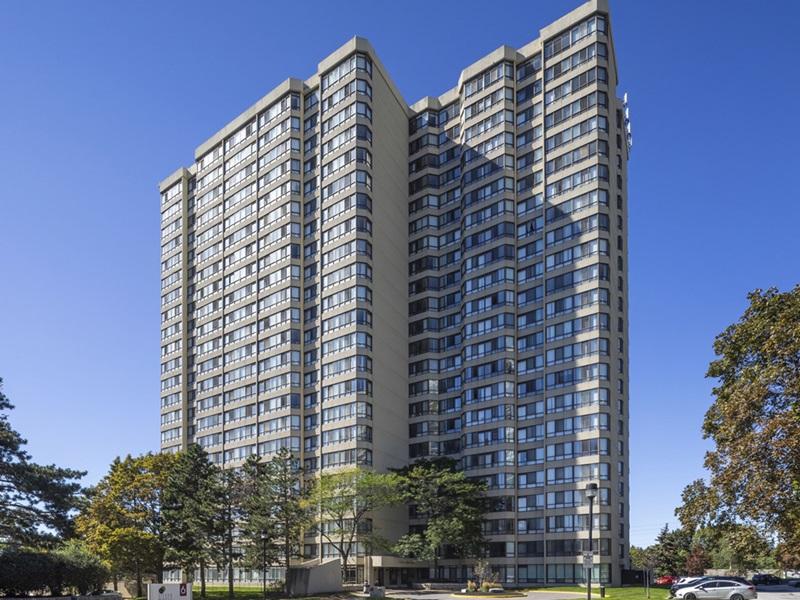
Jonathan Gitlin is president and CEO of RioCan REIT. (Courtesy RioCan)
The mood was optimistic as RioCan REIT president and chief executive officer Jonathan Gitlin and members of his executive team discussed the REIT’s results during an Aug. 9 conference call to review its second-quarter financial performance.
“Based on the quality and positioning of our portfolio, and the strength of our balance sheet, my confidence in our performance remains unwavering despite the obvious unpredictability of the economic background,” said Gitlin.
“It was a tremendously successful quarter and we’re achieving results that are in line with where we stood before COVID.”
RioCan (REI-UN-T) owns, manages and develops retail-focused, increasingly mixed-use properties that are primarily located in high-density, transit-oriented areas in Canada’s largest cities. Its portfolio on June 30 was comprised of 202 properties with an aggregate net leasable area of approximately 35.9 million square feet (at RioCan’s interest), including office, residential rental and 12 development properties.
Gitlin said the trust continued to expand its major market presence and invest in its properties, technology, environmental, social and governance initiatives, and building its team during the quarter.
Financial highlights
Funds from operations (FFO) per unit of 43 cents for the second quarter was three cents per unit higher than the same period in 2021. Strong operational performance drove same-property net operating income (NOI) growth to 6.2 per cent.
Higher residential NOI, residential inventory gains and fee income combined for other increases that were partially offset by a reduction in FFO from assets sold and restructuring costs.
Net income for the second quarter was $78.5 million, down from $145.3 million in the comparable period last year. That’s mainly due to a net loss related to the fair value of investment properties of $42.3 million, compared to a $22.9 million fair value gain in the same period a year earlier.
RioCan has $1.44 billion in liquidity and an unencumbered asset pool of $9.21 billion that can be used to obtain secured financing, so it has financial flexibility. The healthy liquidity can be used as both a defensive measure and opportunistically if potential acquisitions arise.
The total adjusted debt to total adjusted assets ratio was 45 per cent at the end of Q2.
“The quality and resilience of our portfolio, combined with our strong balance sheet, positions RioCan to perform well in any environment,” said chief financial officer Dennis Blasutti.
Occupancy and leasing
Committed occupancy improved for the sixth consecutive quarter and returned to the pre-pandemic level of 97.2 per cent, with retail occupancy at 97.6 per cent.
New and renewed leases generated a blended leasing spread of 10.5 per cent and the volume of 1.5 million square feet was up 9.4 per cent over the same period last year.
Renewed leases of 1.1 million square feet, representing a 93.3 per cent retention ratio, were completed at leasing spreads of 11.2 per cent. New leasing of 400,000 square feet was completed at an average spread of 6.8 per cent.
RioCan is looking to implement annual rent steps with more tenants, aiming for two to three per cent annual increases. Tenants, meanwhile, are looking for longer lease terms than the traditional five years and are seeking to extend leases before expiry.
“We are able to extract reasonable year-over-year growth from our tenants, which is why we have strong belief in our growth profile and NOI trajectory going forward,” said Gitlin.
Given recent inflationary pressures, the resulting increased asset replacement costs are expected to limit an already tight supply of quality retail assets and exacerbate a supply and demand imbalance.
RioCan management believes its well-positioned assets should benefit from demand shifting in its favour, which is expected to lead to rising rents.
“Our efforts over the years are yielding results now and we’ll continue to bolster our success despite market volatility,” said Gitlin. “The scarcity of quality retail space further enhances our competitive advantages.
“It’s safe to say that, in the major Canadian markets, very little new retail supply has been created in the past decade. Replacement costs for well-located retail are now well above market value.”
Many national grocery chains have acquired new banners they want to expand, said Gitlin. Some also have discount banners performing better, or requiring more growth than mainline banners, which they’d also like to expand.
Still other chains are looking for spaces for pharmacies or other ancillary uses.
“We’ve had tremendous response from grocery operators over some available space in three different markets, to the point where we’re seeing some competition for the space,” said chief operating officer John Ballantyne.
“That really benefits pricing.”
Backfilling office space has traditionally been slower, according to Ballantyne, who noted filling that space in the Greater Toronto Area has also slowed significantly over the past couple of years. Existing tenants largely want to retain their space, however, he said.
RioCan Living
The RioCan Living residential rental portfolio was comprised of 2,005 completed units across nine buildings in Toronto, Montreal, Ottawa and Calgary as of Aug. 8. Leasing velocity was strong across stabilized buildings and buildings in lease-up during the second quarter.
An additional 214 units at Rhythm in Ottawa are scheduled to be completed in the fourth quarter.
The 592 units at FourFifty The Well in Toronto will be completed in phases, with first move-ins scheduled in late 2023 and ongoing lease-up expected to occur through early 2024.
The goal is to hit $55 million to $60 million in annual residential NOI within five years, according to Gitlin.
“If we sense that there’s too much absorption for multires rental, we’re also going to supplement that with some condo,” said Gitlin.
RioCan Living’s condominium and townhouse developments generated residential inventory gains of $5.1 million in the second quarter.
As of Aug. 8, 2,627 condo and townhouse units are either under construction or in the process of interim closing, and an additional 451 units are in pre-sale.
Of RioCan’s five active condo and townhouse construction projects, 95 per cent of the total units have been sold.
Development activity
RioCan’s in-house development team delivered 200,000 square feet of completions during the first half of 2022 and 1.1 million square feet since 2020.
The total embedded development potential within the portfolio is 42.4 million square feet, of which 23.7 million are zoned or have submitted applications.
The trust’s development pipeline includes 16 million square feet of permitted projects, of which 2.3 million are under development.
Construction at the largest project, The Well, continued to progress. Approximately 867,000 square feet is undergoing tenant fixturing and three tenants are operating in their units.
RioCan’s development spending target for 2022 is in the $425 million to $475 million range, excluding acquisitions for development purposes.
Construction costs have been impacted by inflation for several years, Gitlin pointed out, but the vast majority of RioCan’s in-the-ground construction projects have fixed contracts that provide a high degree of cost certainty.
“When it comes to new project starts, RioCan will continue to exercise a high degree of discretion, scrutiny and judgment in assessing whether costs and revenue conditions are suitable before we proceed,” said Gitlin.
“Our future development sites are typically active retail sites that currently generate high-quality income. As such, when conditions suggest that timing isn’t favourable for development, we can simply elect to wait.”
Investing and capital recycling
Closed, firm or conditional dispositions totalled $375.8 million as of Aug. 8, including $123 million of completed dispositions during the first half of the year.
These include several non-core and secondary market assets, which should improve the portfolio quality while bringing in capital that can be recycled into more productive uses.
“The disposition market isn’t dead by any stretch,” said Gitlin. “We are actively in the midst of a few transactions on varying types of assets in various geographies within Canada.”
Total acquisitions, including land assemblies and properties purchased within equity-accounted joint ventures, were $187.8 million on a year-to-date basis.











